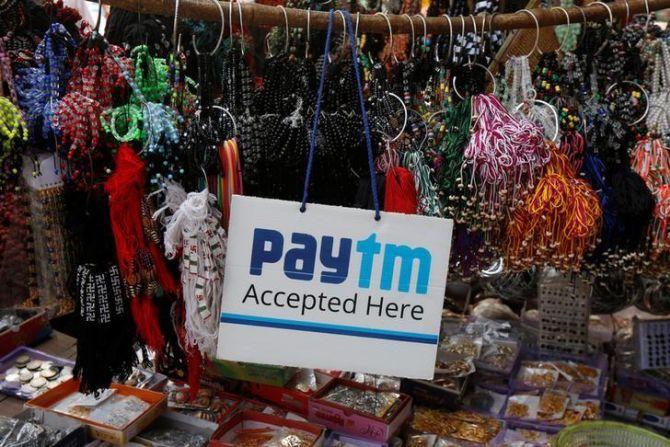While analysts assessed One97 Communications (Paytm) Q1FY24 results as in-line with guidance, the market was disappointed and the stock fell by around 5 per cent.
Paytm reported a net loss of Rs 360 crore, but revenue grew 39 per cent year-on-year (YoY) to Rs 2,340 crore.
It was supported by strong growth in gross merchandising value (GMV), higher disbursements and the addition of subscription devices.
The net payment margin grew 69 per cent YoY to Rs 650 crore in Q1.
The Q1 loss of Rs 360 crore is optically poor versus the reported Q4FY23 loss of Rs 170 crore, but subtracting the UPI incentive, the adjusted net loss for Q4FY23 would be Rs 350 crore.
The GMV grew 37 per cent YoY to Rs 4.1 trillion in Q1FY24, which grew 12 per cent quarter-on-quarter (QoQ).
Loan disbursements grew 167 per cent YoY to Rs 14,850 crore in Q1FY24.
Revenue was up 39 per cent YoY but flat QoQ at Rs 2,340 crore.
Segment-wise, revenue from payment and financial services grew 44 per cent YoY to Rs 1,940 crore, with 98 per cent YoY growth in financial services and 51 per cent growth in payment services to merchants.
Financial services now forms around 22 per cent of the total revenue.
Revenue from commerce and Cloud services grew 22 per cent YoY (up 3 per cent QoQ), to Rs 410 crore.
Negative trends were mainly due to a decline in the movie and entertainment business.
The number of active cards increased by 160,000 to 750,000.
Excluding goods and services tax (GST), Paytm charges about Rs 100 per month as subscription fees on the sound box and Rs 300-500 per month on the PoS (point of sale) card machines.
Payment processing charges stood at 19 basis points (bps) of GMV in Q1FY24 versus 22 bps in Q4FY23.
Despite no UPI incentives, the payment processing margin stood at 7-9 bps of GMV and the company expects it to settle at 5-7 bps over the medium-to-long term.
Thus, net payment margin grew 69 per cent YoY to Rs 650 crore, aided by healthy growth in subscription devices to 7.9 million (up 1.1 million in Q1FY24).
Direct expenses stood at 44 per cent of the total revenues versus 45 per cent in Q4FY23.
The adjusted Ebitda came in at Rs 84 crore in Q1FY24 versus Rs 230 crore in Q4FY23. Adjusted EBITDA margin declined to 3.6 per cent (it was 5 per cent adjusted for UPI incentives in Q4FY23).
The Paytm management remains focused on becoming free cash flow positive before the end of FY24.
The take rate in the lending business is 3.5-3.75 per cent (including collection incentives from the lender) and the company expects it to improve.
The portfolio quality improved in Q1FY24 versus Q4FY23, with a reduction in the bounce rates and a moderation in expected credit loss (ECL) costs, especially in post-paid loans.
The sales employee count grew by 38 per cent YoY to about 30,000.
Fixed costs, ex-ESOP, were up 14 per cent QoQ due to increased headcount.
The management remains optimistic on the growth opportunity for the payments business in India with more than 500 million payment customers and opportunity to cross-sell financial services.
Disbursements hit an annualised run-rate of Rs 60,000 crore in Q1FY24 with 90 per cent YoY growth in revenues despite a dip in take rate with loan disbursements up 170 per cent YoY.
The management expects this strong momentum to sustain, driven by new lending partners and better asset quality.
According to Bloomberg, 10 of the 11 analysts polled post results are bullish on the stock (one is neutral) with an average target price of Rs 1,018.
Disclaimer: This article is meant for information purposes only. This article and information do not constitute a distribution, an endorsement, an investment advice, an offer to buy or sell or the solicitation of an offer to buy or sell any securities/schemes or any other financial products/investment products mentioned in this article to influence the opinion or behaviour of the investors/recipients.
Any use of the information/any investment and investment related decisions of the investors/recipients are at their sole discretion and risk. Any advice herein is made on a general basis and does not take into account the specific investment objectives of the specific person or group of persons. Opinions expressed herein are subject to change without notice.
Source: Read Full Article

